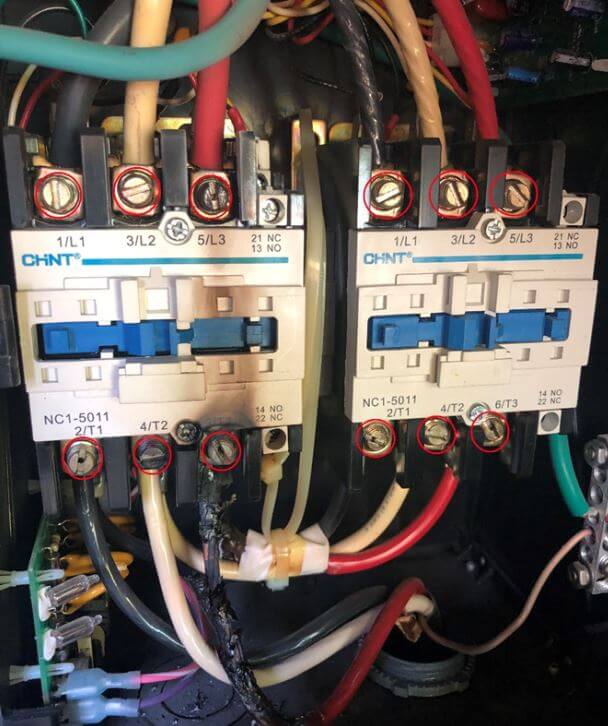By Kevin L. Vaughn
I often find myself attending the “Advanced School of Hard Knocks,” and this morning was yet another graduation day. This unexpected lesson highlighted an important activity that should be included in what I call a “Level 2” pre-trip inspection. It was a lesson well worth sharing with our RV members, as I find myself in temporary quarters tonight.
If your motorized RV has a generator for use when shore power is unavailable, you likely also have an automatic “Transfer Switch” or Surge Guard, which manages the power switch between 2 power sources. This device also acts as a passive surge protector against unexpected power spikes. Typically, suppose your generator is determined to be producing electric current. In that case, the Transfer Switch will grab control of the incoming current (as a priority), and redirect it into the RV’s internal power grid. If/When power resumes from the shore power source, the Transfer Switch may sustain control for a pre-determined amount of time before switching to the shore power source and shutting down the generator.
While this costly Transfer Switch device may last for the life of your RV, it is not uncommon for it to fail due to a component failure or power spikes. Most of the devices are assembled rigidly and are not anticipated to require annual maintenance. However, 12 heavy gauge wire connections are held in with hand-tightened screws, which are tightened/installed during your RV construction. With all the bumps, thumps, and grinds our RVs encounter, things can loosen up anywhere in the RV, including a Transfer Switch. Personally, I never anticipated it until this morning.
I have amassed over 67,000 miles on my 2019 Class A tag axle covering roads from Florida to Alaska, and never once did I remove the two screws on the cover of my Transfer Switch to verify everything was in place. I previously took the approach that if it works, don’t fix it, which bit me in the butt this morning.
At 8:00 am, my symptoms started with no 110 Volt power in both my bathrooms, prompting me to check for any thrown breakers, of which I found none. Then I noticed that my front and rear air conditioners were not working, but my midcoach air conditioner was. This prompted me to check for any thrown breakers, and I found none. Checking my Magnum Energy control panel, I was unexpectedly inverting when plugged into GOOD shore power. Then I noticed that my RV was not charging the batteries in any mode. My next action was to turn OFF my invertor and restart it. I switched my house power OFF and ON, but nothing changed.
I finally went to the pedestal and checked my surge suppressor, which read (L1 = 122 Volts and L2 = 123 Volts). I next turned off the pedestal power and switched it back on again which resulted in no change. At that point, I contacted the Service staff at Entegra for some guidance. They retraced every step I had completed and then turned me over to a senior tech to guide me through using a multimeter on my Transfer Switch internally. Upon opening the lid, the problem was blatantly apparent, as shown below. Something fried one leg of the power feed. The tech advised me to turn off all power to the unit and replace the Transfer Switch.
This unexpected shutdown while camping caused me to empty my refrigerator, turn off all the power in the coach, and move out in the heat of the day. When I reached a safe haven, I spent several hours on the Internet and phone tracking down a replacement that could be received in next-day air at a cost of $1,026. Bectook a lot of work device updates. It was not easy to match Entegra part numbers to South Wire part numbers.
Later, I returned to the coach to pick up a few things and see what I could do to prepare for tomorrow’s 40-minute replacement job.
Upon further investigation, I found the cause. The red wire shown at the bottom, which fed the RV house, had slid down out of the screw connector just enough to work still but arc (apparently repeatedly). The wire separation must have arced enough to eventually burn the insulation on the red wire and subsequently create burn marks on the white panel above. The red wire was literally loose, hanging, and not broken.
With that being said, this incident pointed out the twelve hold-down slotted screws for the heavy gauge wires tying the shore power and generator input to the house. All of these have the potential of coming loose through simply normal travel. As for the replacement Transfer Switch, the factory initially stated today that I should expect a 4 to 6-week ordering interval for a replacement device from any source. By tomorrow, I hope to feel really lucky!
I must admit that when I bought this RV in 2020, I used to carry a spare Transfer Switch for just such an occasion. But 2 years ago, I helped a nearby RV owner when his failed and I sold him my spare, which I never replaced.
Lesson learned, and thanks to Rose at Camping World for locating the part and getting it to me tonight.
Jacks Up!…. see you down the road.

